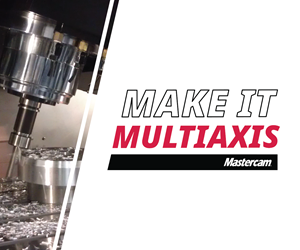How to Succeed in Metalworking? The Answer’s in the Data
In a recent survey, more than 300 businesses using metalworking technology shed light on their outlook for future business conditions, greatest challenges and which strategies are working best for addressing those challenges.
Not only are metalworking businesses changing, they’re changing significantly and for the better. What’s more, the pace of that change shows no sign of slowing, even in the face of an unpredictable future that’s rife with significant challenges.
That’s the picture painted by a recent survey commissioned by Grainger, an industrial supply company, and Practical Machinist, an online metalworking community. Worries cited by the survey's 360 respondents included the result of the election (unknown at the time of the survey), overseas competition, regulation, taxes, U.S. and global economic volatility, and, above all, difficulties with finding talent. Nonetheless, among those respondents, all of whom hail from businesses using CNC or other metalworking machinery, the number who expected business to improve next year more than doubled the number who expected it to decline (42 percent versus 20 percent, with 10 percent unsure and 29 expecting no change).
The numbers also suggest the possibility that this optimism could very well be the result of active, successful efforts to address challenges, with more than 70 percent reporting their businesses had changed during the past year and more than half of that number saying the change was significant.
What is the nature of these efforts? Investments in new equipment topped the list, particularly multitasking and high-speed-machining technology, as well as shopfloor reorganization and active approaches to workforce development, such as apprenticeship programs and partnerships with educational institutions.
The summary video above offers more examples. Of course, the full survey, which can be accessed by registering an email address with Grainger, offers even more specifics. For instance, in the category CAD/CAM and preproduction, verification software made the most impact, and the survey also indicates that respondents have high expectations for digital tooling technology in the future.
The Grainger/Practical Machinist survey certainly isn’t the only resource for manufacturers interested in getting a window into how other, similar businesses find success. Our annual Top Shops benchmarking program invites manufacturers of all sizes and from across the country to report (anonymously) on their activities. Once compiled, this survey data enables us to zero in on optimal shopfloor practices as well as operational and business metrics that define world-class competitiveness in discrete parts manufacturing. This brief blog post about the program is a good place to dive in.
Related Content
-
10 Tips for Titanium
Simple process considerations can increase your productivity in milling titanium alloys.
-
Understanding Errors In Hand-Held Measuring Instruments
Different instruments (and different operators) are prone to different errors.
-
Key CNC Concept No. 1—The Fundamentals Of Computer Numerical Control
Though the thrust of this presentation is to teach you CNC usage, it helps to understand why these sophisticated machines are so important. Here are but a few of the more important benefits offered by CNC equipment.











.png;maxWidth=300;quality=90)




